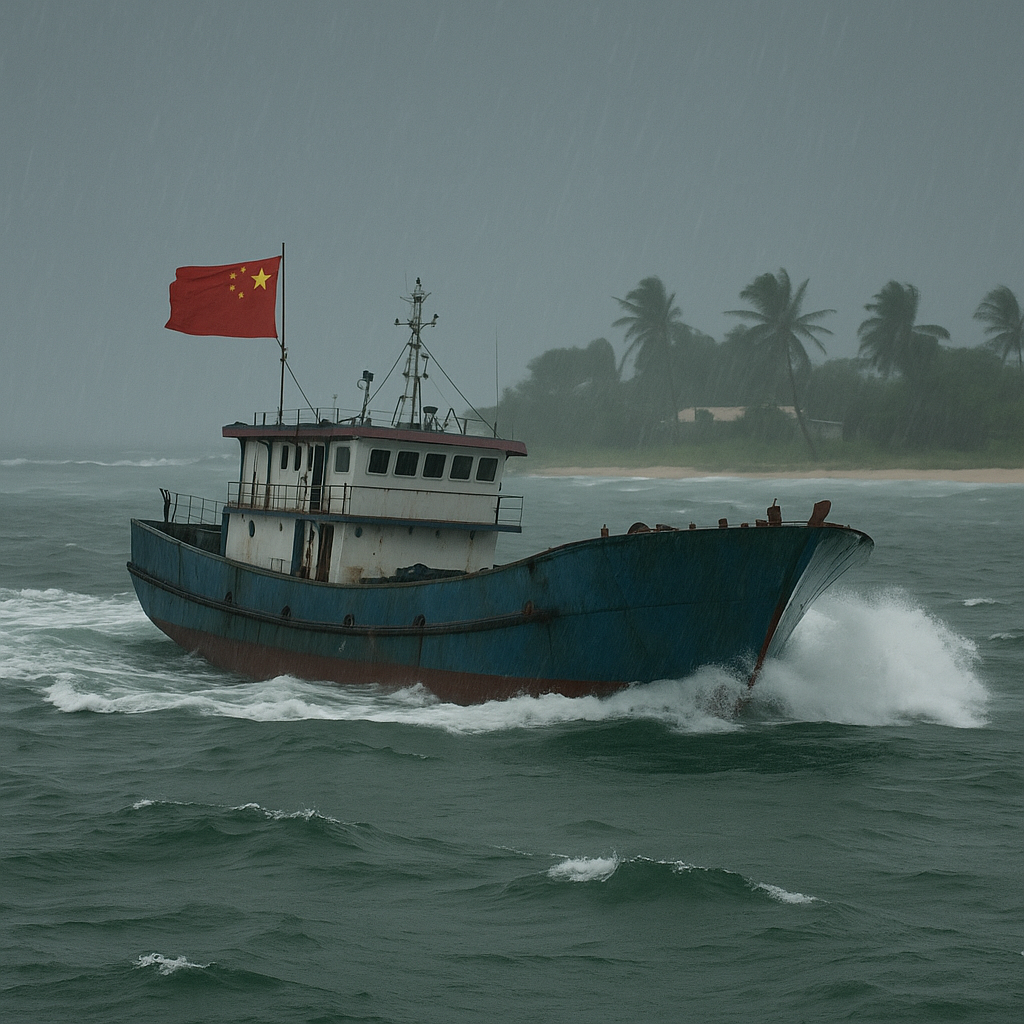In a fresh turn of events in the volatile South China Sea, a Chinese fishing vessel ran aground Saturday in shallow waters off Thitu Island—an area occupied and patrolled by the Philippines.
Uninvited in Shallow Waters
According to Philippine military officials, the incident occurred during stormy weather, raising immediate alert among local forces stationed nearby.
Filipino troops and coast guard personnel responded swiftly after being informed by residents of the Pag-asa village, a small Filipino fishing settlement on Thitu Island. The grounded vessel was spotted just 1.5 nautical miles from the village, triggering concerns due to its proximity.
The regional navy spokesperson, Lt. Cmdr. Ellaine Rose Collado, confirmed that Filipino units initially moved in to offer assistance, treating the situation as a maritime distress scenario. However, before any direct contact could be made, observers noted that the Chinese ship had been successfully pulled away by other vessels—believed to be Chinese as well.
There were no immediate reports of injuries or structural damage to the vessel. Philippine defense forces emphasized their commitment to maritime safety and international law.
“The alertness of our troops is always there,” said Col. Xerxes Trinidad, stressing that Philippine personnel are trained to act professionally even in the face of maritime uncertainty.
Local Alert and Suspicion Rise
The ship’s arrival so close to Thitu Island came as a surprise to residents, who were first to spot the vessel near their shoreline. MP Albayda, a local official, noted the villagers’ alarm when the unfamiliar vessel appeared at such close range.
“They got worried because the Chinese were so close,” Albayda explained. “But it was really the strong wind and waves that caused the ship to run aground.”
U.S. Missile Lands Near China’s Doorstep—Luzon Strait Near Philippines Becomes Pacific Power Pivot
The vessel bore a strong resemblance to what the Philippine military has previously described as “suspected Chinese militia ships.” These ships have often accompanied Chinese coast guard and naval units in blocking Philippine missions or asserting Beijing’s territorial claims in the area. However, in this instance, the ship’s presence appeared accidental and linked to the weather.
Still, the incident underscores the ever-present tension in the region. Filipino officials have long expressed concern over the growing presence of non-commercial Chinese vessels in disputed areas, many of which are suspected to play dual roles—civilian in form, strategic in purpose.
South China Sea Flashpoint Thitu Island Intensifies
Thitu Island—known locally as Pag-asa—is the Philippines’ largest outpost in the South China Sea and holds strategic significance. It sits about 26 kilometers from Subi Reef, one of seven locations China has turned into a fortified island base. These artificial islands now host airstrips, radars, and port facilities, strengthening China’s expansive claims over the region.
Philippines Set to Receive Powerful F-16 Jets: High-Tech Combat Strength or High Price Tag?
This latest incident is one of many in a series of maritime flashpoints between China and the Philippines. While no armed confrontation occurred this time, the accidental grounding near Thitu Islands adds to growing friction in the area.
The South China Sea remains one of Asia’s most contested maritime zones. Apart from China and the Philippines, nations like Vietnam, Malaysia, Brunei, and Taiwan also have overlapping claims. Despite not laying any territorial claim, the United States continues to conduct freedom-of-navigation operations in the region and has reiterated its treaty obligation to defend the Philippines against any armed attack—including those occurring at sea.
The significance of Thitu Island, both symbolically and militarily, cannot be understated. It is one of the few inhabited Philippine territories within the Spratly Islands, where multiple nations assert ownership. The island also acts as a forward post for monitoring Chinese movements across nearby reefs and waters.
With this latest episode, the South China Sea dispute returns to the headlines—not through direct conflict, but through a reminder of how even an unintentional event can raise red flags in contested territory.
Published by DefTech Times | South China Sea Division

